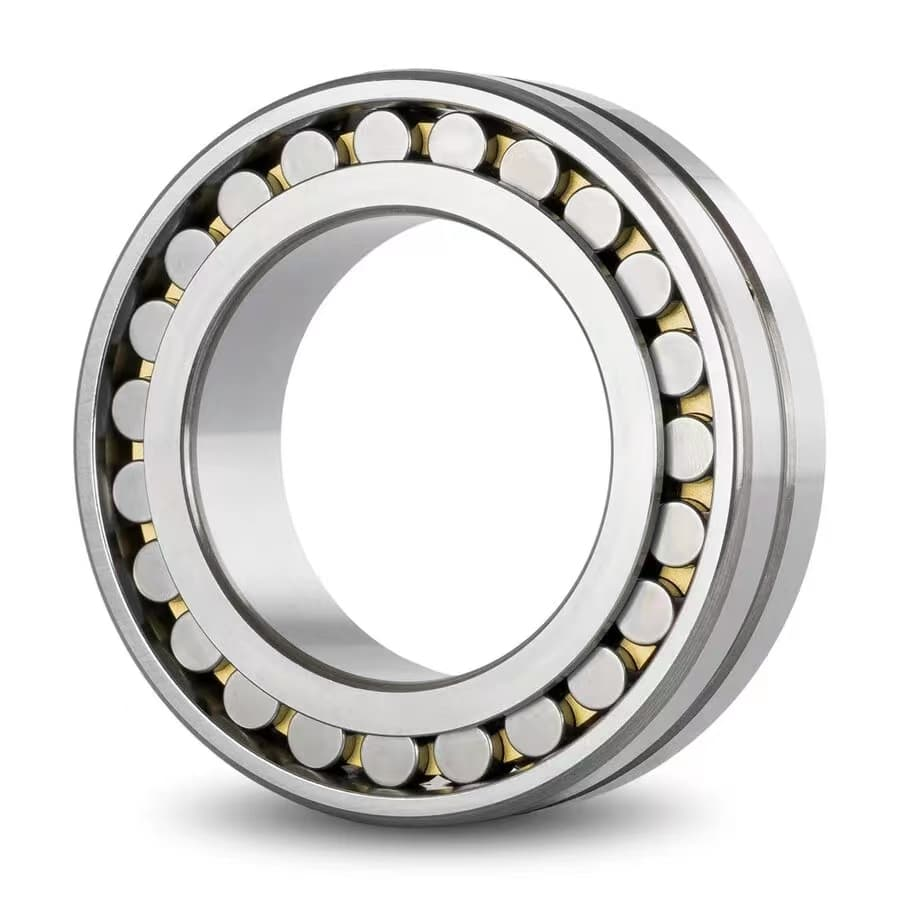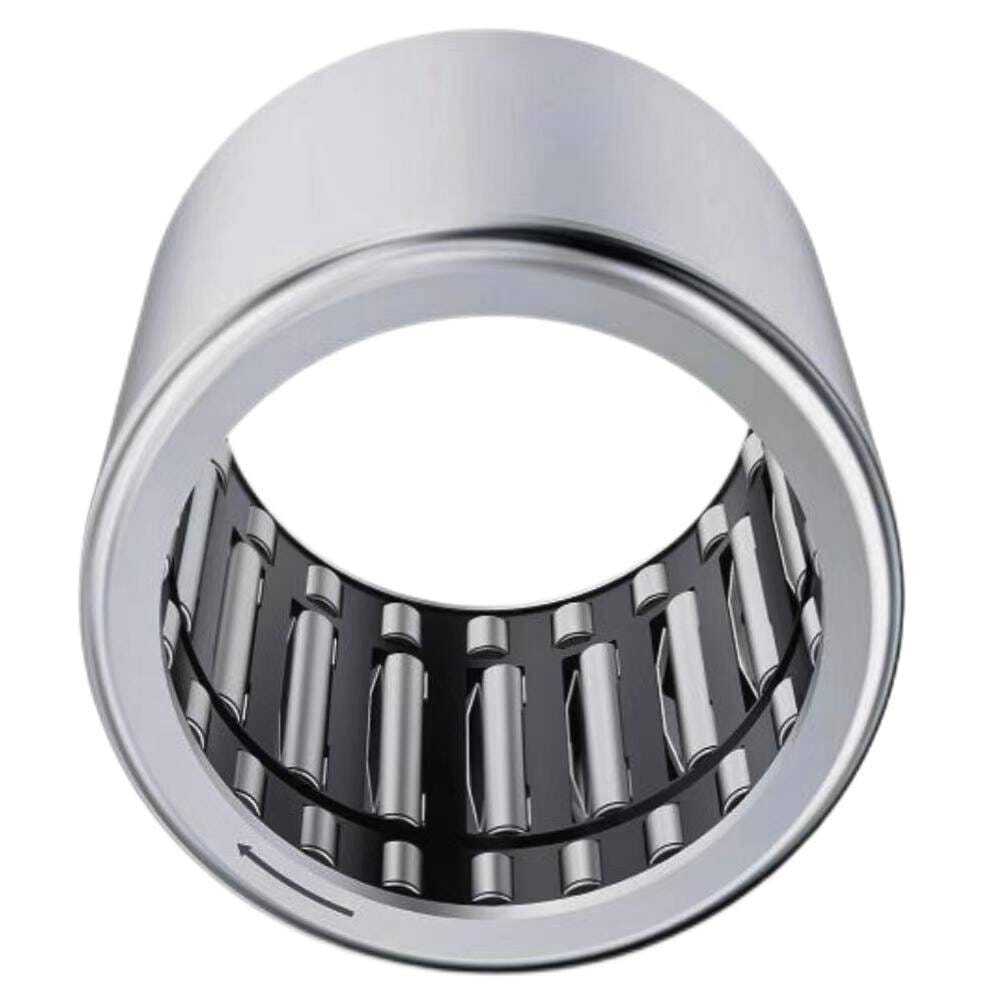What Is a Roller Bearing Used For?
Roller bearings are vital components in modern machinery. They play a critical role in ensuring smooth, efficient, and reliable operation across a...

Roller bearings are important because they reduce friction and help parts move smoothly. By using rolling instead of sliding, roller bearings help machines run more efficiently.
This reduces wear, making machines last longer and use less energy. Roller bearings support both radial and axial loads. This makes them essential for many applications across different industries.
In this blog, we cover several types of roller bearings, each designed to meet different needs. These types differ in design, load capacity, and application requirements. This ensures the best performance for various industries.
The rolling elements of cylindrical roller bearings have a cylindrical shape. This design increases the contact area between the rollers and the raceways. As a result, the load is distributed evenly across the bearing. This allows the bearing to support high radial loads effectively and reduces wear.
Cylindrical roller bearings can handle heavy radial loads because of their large contact area. They can also support moderate axial loads, making them versatile. This allows them to be used in many different applications, from machines to vehicles. Their ability to handle both types of loads ensures smooth and reliable performance.
The E-type cylindrical roller bearings offer enhanced radial load capacity. This makes them ideal for applications that require high radial load support, such as heavy-duty machinery and large industrial equipment.
The HT-type bearings have increased axial load capacity. They are designed for applications that experience higher axial forces. This makes them ideal for systems like automotive gearboxes and high-speed turbines.

Needle roller bearings have long, thin rollers that are much smaller in diameter compared to traditional cylindrical rollers. This design allows them to fit into tight spaces, making them highly space-efficient.
The low cross-sectional height of the rollers means they can support a high radial load despite their small size. This makes needle roller bearings ideal for applications where space is limited. They are perfect for high load capacity needs, such as in automotive components, gear systems, and industrial machinery.

Needle roller bearings are designed with long, thin rollers that provide a large contact area with the raceways while maintaining a small overall size. This allows them to support a high radial load relative to their compact dimensions.
The small diameter and low profile of the rollers enable these bearings to fit into tight spaces. This makes them ideal for applications where space is limited but high load capacity is still required. For example, they are commonly used in automotive gear systems, transmissions, and small machinery. These applications require efficiency and space-saving, making needle roller bearings a great choice.
Needle roller bearings are used in automotive parts, transmissions, and compressors. They save space and handle heavy loads well, making them ideal for these applications. Their slim design allows them to fit into tight spaces while supporting heavy loads, making them perfect for parts like gear shafts and crankshafts.
The conical shape of tapered roller bearings helps them support both radial and axial loads at the same time. The angled rollers spread the load evenly. The vertical contact handles the radial load, while the angled contact takes on the axial loading. This design makes them perfect for applications with both types of forces, like in car wheels and heavy machinery.

The contact angle between the rollers and raceways helps distribute loads and improve bearing performance. A larger angle handles more axial load, while a smaller angle is better for radial load. This balance ensures even force distribution, smoother operation, and longer bearing life.
Tapered roller bearings are used in pairs to handle axial loads in both directions. One bearing takes the load in one direction, and the other handles the opposite. This arrangement ensures the system remains stable and balanced. It makes the bearing ideal for applications such as automotive wheels and industrial machinery.
Double-row tapered roller bearings are perfect for high-load jobs like rolling mills and heavy machinery. With two rows of rollers, they handle heavy loads in both directions. They are robust, durable, and designed to withstand demanding conditions.
Tapered roller bearings are widely used in industries like automotive, heavy machinery, and mining. They handle high loads and combined forces effectively. This makes them ideal for car wheels, construction equipment, and mining machines.
The self-aligning outer ring in certain bearings allows for automatic adjustment to misalignment between the shaft and housing. The barrel-shaped rollers can tilt within the bearing to compensate for angular misalignment. This helps maintain smooth operation and reduces stress on the bearing components.

Spherical roller bearings are designed with two rows of rollers that run on a spherical outer race. This design allows them to handle high radial loads by distributing the load across the rollers. The spherical inner race permits some angular misalignment.
This allows the bearing to support moderate axial loads in both directions. As a result, spherical roller bearings are suitable for applications like motors, gearboxes, and conveyors.
Self-aligning capabilities in spherical roller bearings help them perform well in conditions involving shaft misalignment or deflection.
The spherical outer ring allows the rollers to adjust to slight misalignments. This helps prevent excessive stress and wear on the bearing. This ensures smooth operation of the bearing. It also extends the bearing's life, even when the shaft or housing is not perfectly aligned.
Spherical roller bearings are frequently used in industries such as industrial machinery, mining, and paper mills. They are ideal for handling heavy loads and misalignment. This makes them perfect for equipment like crushers, conveyors, and rolling mills.
Cross roller bearings use alternating rollers arranged at 90-degree angles to each other. This unique arrangement allows them to handle both radial and axial loads simultaneously.
It provides high load capacity. It offers stability in compact designs. This makes it ideal for precision equipment like robotic arms and machine tools.

Cross roller bearings are rigid because of their alternating rollers that support loads in different directions. This design keeps things precise and reduces friction. This makes cross roller bearings perfect for high-speed operations where stability and less wear are important.
Cross roller bearings are used in robotic arms, precision machinery, and turntable bearings. These applications need high precision and the ability to handle heavy loads. This makes cross roller bearings perfect for smooth operation and stability.
Spherical roller thrust bearings are designed with barrel-shaped rollers and a self-aligning outer ring. The barrel-shaped rollers allow the bearing to handle high axial loads in both directions. They provide a larger contact area and distribute the load efficiently.
The self-aligning outer ring helps compensate for misalignment. This allows the bearing to maintain smooth operation even when the shaft or housing is not perfectly aligned. This design makes spherical roller thrust bearings highly effective for applications where high axial loads are required. They also offer alignment flexibility, making them ideal for heavy machinery and automotive systems.

Spherical roller thrust bearings are designed to absorb high axial loads using barrel-shaped rollers. These rollers provide a large contact area, which helps distribute the load evenly.
Additionally, their self-aligning outer ring allows the bearing to compensate for misalignment. This ensures smooth operation even when the shaft or housing is not perfectly aligned. This combination of high load capacity and alignment flexibility makes spherical roller thrust bearings ideal for heavy-duty applications.
They are perfect for use in industrial machinery and automotive systems. These bearings are also highly effective in gearboxes, where both high axial loads and misalignment are common.
Double-row and multi-row roller bearings can handle higher loads than single-row designs because they have more rows of rollers. This helps spread the load over a larger area, making them stronger and more durable. These bearings are perfect for heavy-duty jobs like construction equipment, industrial machinery, and mining. They are ideal where high load capacity and reliability are needed.
Double-row and multi-row roller bearings are used in machine tools, rolling mill rolls, and printing cylinders. These jobs need high rigidity and strong load handling. This makes these bearings perfect for precision, stability, and reliable performance under heavy loads.
The blog explains different roller bearings for various tasks. Each bearing type suits specific application based on its design and load capacity.
Choosing the right roller bearing is key to getting the best performance. By picking the right bearing for your needs, you can improve performance. This also helps reduce maintenance expenses.
For expert help in choosing the right roller bearing, contact LILY Bearing. We can guide you in selecting the best bearing for your needs.

Roller bearings are vital components in modern machinery. They play a critical role in ensuring smooth, efficient, and reliable operation across a...

Bearings are often unseen, yet they play a fundamental role in ensuring the smooth and efficient functioning of countless machines, devices, and...

Bearings are essential mechanical components used to reduce friction between moving parts. Among the various types of bearings, needle bearings and...